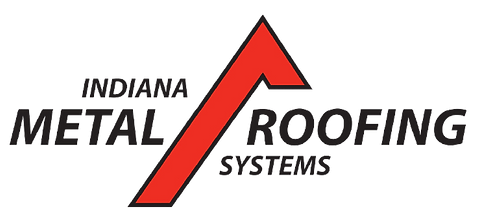The Ultimate Guide to Metal Roof Underlayment
- Joseph Justice
- Dec 20, 2024
- 4 min read
A well-constructed metal roof can last for decades, but its longevity and performance largely depend on the quality of the underlayment. Underlayment acts as a crucial barrier, protecting your home from water damage and other environmental hazards. It not only provides additional insulation but also shields your roof during and after installation.
At Indiana Metal Roofing Systems, we understand the critical role of underlayment in metal roofing. Our professional team is dedicated to using high-quality materials to ensure your metal roof performs optimally for years to come.

Types of Metal Roof Underlayment
There are several underlayment options available for metal roofing. Each type has its own benefits, and the right choice depends on your specific needs and location. Here are the three main types of underlayment for metal roofs:
1. Felt Paper Underlayments
Traditional felt underlayments are made from wood or fiberglass, coated with asphalt or another water-repellent material. Felt paper is one of the oldest types of underlayment, offering basic protection against moisture. However, felt has several drawbacks:
Smaller roll sizes, making installation slower.
Heavier weight compared to other materials.
Less durable, especially in extreme weather conditions.
Felt paper is a more economical option but may not be the best choice for areas that experience heavy rainfall or harsh weather.
2. Mechanically Attached Synthetic Underlayments
Made from advanced polypropylene or polyethylene plastic, synthetic underlayments are lightweight, durable, and resistant to UV rays. They provide long-lasting protection and are often preferred for metal roofing because they:
Offer greater strength and durability compared to felt.
Are easy to install, saving time and labor costs.
Withstand prolonged exposure to sunlight.
Due to their durability and ease of use, synthetic underlayments have become the industry standard for metal roofs.
3. Peel & Stick Synthetic Underlayments
Peel & stick underlayments provide superior protection by creating a self-sealing barrier around nails and other penetrations. They consist of three layers: a synthetic top, a modified bitumen middle layer, and an adhesive bottom that sticks directly to the roof deck. Benefits of peel & stick underlayments include:
Self-sealing around fasteners, preventing leaks.
Easy installation without the need for additional mechanical fasteners.
Superior water resistance, especially in areas prone to heavy rainfall.
This type of underlayment is ideal for areas that face extreme weather conditions or for homeowners looking for maximum protection.
Why Choose Synthetic Over Traditional Felt?
As metal roofing continues to evolve, synthetic underlayments have become the preferred choice for both contractors and homeowners. Here’s why:
Longer lifespan: Synthetic underlayments last much longer than traditional felt, offering better value over time.
Better moisture resistance: Unlike felt, synthetic materials are more resistant to water absorption, which helps prevent mold and water damage.
UV protection: Synthetic underlayments are designed to withstand exposure to sunlight, making them more durable in regions with high UV radiation.
Lightweight and easy to install: Synthetic underlayments are lighter and easier to work with, reducing labor costs and making the installation process faster.
Key Considerations for Choosing the Right Underlayment
When selecting an underlayment for your metal roof, there are several factors to consider:
Climate: Homes in wet or snowy climates may benefit from peel & stick underlayments for added water protection.
Roof slope: The pitch of your roof can affect which type of underlayment is best. Steeper slopes may require more durable materials to prevent sliding or movement.
Budget: While synthetic underlayments are typically more expensive than felt, their durability and performance make them a worthwhile investment in the long term.
Installing Metal Roof Underlayment: Best Practices
Professional installation is key to ensuring that your underlayment functions as intended. Poorly installed underlayment can lead to leaks, moisture buildup, and other issues, compromising the integrity of your roof. Working with an experienced roofing contractor is essential for proper installation and long-lasting results.
At Indiana Metal Roofing Systems, we combine industry knowledge with high-quality materials to provide the best roofing solutions for our clients. Our team recommends a combination of mechanically attached and peel & stick underlayments to optimize both performance and cost-effectiveness.
FAQs
1. What is the purpose of underlayment for a metal roof?Underlayment provides a protective barrier between the roof deck and metal roofing panels, preventing moisture penetration and adding an extra layer of insulation.
2. Can I use felt underlayment under a metal roof?Yes, felt underlayment can be used under a metal roof, but it is less durable and more prone to water absorption compared to synthetic options.
3. How long does synthetic underlayment last?Synthetic underlayments can last up to 30 years, depending on the specific material and proper installation.
4. What is peel & stick underlayment, and is it worth the investment?Peel & stick underlayment is a self-adhesive option that seals around fasteners, providing superior water resistance. It is an excellent choice for homes in areas with heavy rain or snow.
5. Do I need to replace my underlayment when I replace my metal roof?Yes, it is recommended to replace the underlayment whenever you replace your roof to ensure maximum protection and performance.
For more information on how roof inspections can protect your home, check out our next article on Roof Revival: Dealing with Algae on Shingles.


Comments